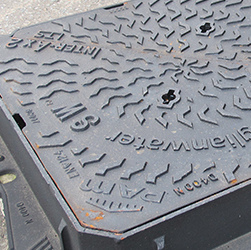
Could the Government’s change of course on SuDS prove fatal?
Changing course on mandating SuDS in new developments
With the momentum around responsibility for mandating SuDS in new developments having moved to local planning departments, bypassing the Flood and Water Management Act, there is now the clear potential for the emergence of a piecemeal approach.
The wider surface-water retention and run-off issues affecting a region could be sidelined in favour of local concerns, even resulting in SuDS installations being counterproductive.
Alternative approach to Flood and Water Management
On 12th September Defra announced a consultation across industry which called for views on an alternative approach to the one envisaged in the Flood and Water Management Act 2010, stating The Government has listened, and in response now wishes to consult on delivering sustainable drainage systems through changes to the current planning regime.
The consultation states that the method would use the National Planning Policy Framework, which both means the change will only cover developments of 10 houses or more, and decision-making will rest with local planning departments. The new arrangements are due to come into force in spring 2015.
By nature, local planning looks at local needs when it comes to new development, and not at the wider context. SuDS has to be holistic rather than site-specific to work properly, looking at the crucial ramifications downstream of new installations. Moving the problem onto someone elses patch could result in a nightmare scenario, when more joined-up thinking might have mitigated this risk.
Future role for SuDS Approval Boards
The new consultation also leaves the future role of SuDS Approval Boards (SABs), which were being set up locally as required by the Flood Act 2010, mired in confusion. Maintenance requirements and responsibilities also still require clarification So who owns the new asset, and should therefore maintain it? The issue of adoption is crucial, but its purely down to how the local authority enforces it, and could leave the taxpayer with huge maintenance costs.
The bottom line is nobody is making local planners think holistically, and the proof will be in the pudding,
Gareth Twohey, National Sector Manager for Utilities, KEYLINE
SEND YOUR COMMENTS TO BUILDINGTALK
READ MORE HOT TOPICS
Latest news

22nd November 2024
Purplex: A tough Budget, but opportunity still knocks
Incoming governments, especially those with significant mandates, inevitably come into power on a tidal wave of optimism coupled with hope that ‘Things can only get better’. Andrew Scott, MD of construction-focused, full-service agency Purplex, talks…
Posted in Articles, Building Industry News, Building Services, Information Technology, news, Posts, Research & Materials Testing
22nd November 2024
Pop Up Power Supplies Gets Arty in Yorkshire
Pop Up Power Supplies has installed 13 new electricity units at The Hepworth Wakefield – read more in this article…
Posted in Articles, Building Industry News, Building Products & Structures, Building Services, Case Studies, Civil Engineering, Facility Management & Building Services, Garden, Hard Landscaping & Walkways, Landscaping, Posts, Restoration & Refurbishment, Retrofit & Renovation
22nd November 2024
OPT Services Revolutionises Fibre Cable Capping with Eco-Friendly Innovation
UK-based OPT Services has unveiled SlimLine™ Capping, a groundbreaking fibre cable protection solution that promises to deliver significant environmental and installation advantages to the fibre optic industry.
Posted in Articles, Building Industry News, Building Products & Structures, Building Services, Facility Management & Building Services, Information Technology, Innovations & New Products, Sustainability & Energy Efficiency
22nd November 2024
CRL: The elegance of Paris balconies - a modern touch for any home
Paris balconies, with their timeless charm and practicality, are becoming something of an architectural staple in urban and rural environments, as CRL explains here…
Posted in Articles, Balustrades and Guardrails, Building Industry News, Building Products & Structures, Case Studies, Garden, Glass, Glass Projects, Restoration & Refurbishment, Retrofit & Renovation
 Sign up:
Sign up: